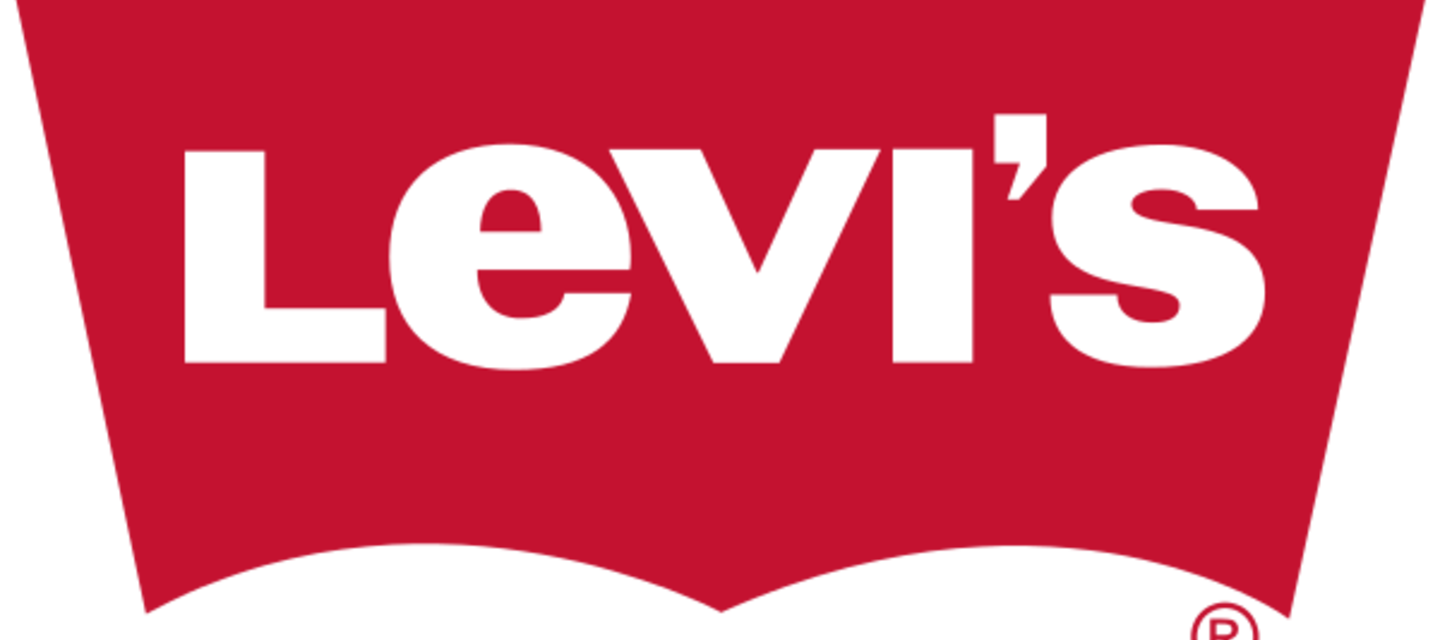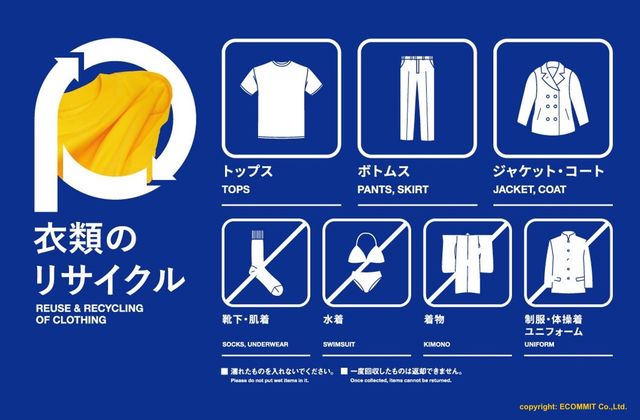Fashion, clothing and textiles
What is it? Levi’s® Jeans, a brand under Levi Strauss & Co. goes back to the invention of the denim jean pants in 1873. With the original jeans designed by Levi Strauss to meet the need for clothing that endures tough use, Levi’s® has been building on the brand’s tradition to design jeanswear for long-term use. On the production side, Levi’s® has pushed environmental innovation for a more sustainable denim production, including cottonized hemp, the WellThread® programme or water-saving Water<Less® technology (Levi’s, 2021b). On the consumer side, the company supports its customers to wear their denims as long as possible, through second-hand authorized vintage resale, repair and customization in the Levi’s® Tailor Shops or raising awareness of sustainable consumption, such as in the “Buy Better, Wear Longer” campaign launched in April 2021 (Levi Strauss & Co, 2021a).
Why is this important? Clothing consumption has doubled between 2000 and 2020, moving the production, use and disposal of garments onto wholly unsustainable scales (Levi Strauss & Co, 2021a). The fashion industry is a large emitter of greenhouse gases with the new production of clothing accounting for 10% of global carbon emissions (McFall-Johnsen, 2021). At the same time as production and consumption increases, clothing is heavily underutilized in the mainstream fast fashion system and the average number of wears of a garment has decreased by 36% in 15 years (Ellen MacArthur, 2017). Commonplace fast fashion business models lead to the production of a lot of garments with short life spans and low prices, oftentimes under difficult conditions for the workers (Ellen MacArthur Foundation, 2017). The fast fashion business model is also inherently linear, with around 60% of clothing being thrown away and sent to incineration or landfill within a year of production (Remy et al., 2016).
Main resource strategy: Slowing through enabling long-time product use with durable product design, repair and care opportunities and vintage resale.
Other resource strategies: Closing the loop through upcycling vintage denim into new products and designing items in the WellThread® programme to be fully recyclable; Narrowing the loop through innovating for less water use in the production process with Water<Less® technology; Regenerating by powering part of the production process with renewable energies and innovating around cottonized hemp, a less resource intensive cotton alternative.
Business model aspects:
- Value Proposition: The Levi’s® brand produces denim jeanswear and other clothing and accessories. The company’s value proposition is to sell clothing that is made to last a long time and whose production is less unsustainable than competitors. As part of their environmental work, Levi’s® has promoted environmental innovation in denim production, for instance through developing cottonized hemp, the WellThread® programme or water-saving Water<Less® technology (Levi’s, 2021b). The company also strives to promote more circular and sustainable consumption, through second-hand authorized vintage resale, repair and customization in the Levi’s® Tailor Shops as well as education such as through the “Buy Better, Wear Longer” campaign (Levi Strauss & Co, 2021a).
- Value Creation & Delivery: For new items, Levi’s® retails its clothing online and through retail stores. For vintage secondhand items, the brand operates online under Levi’s® Secondhand. Customers can trade in their products to Levi’s® Secondhand and receive store credit in exchange, with credit ranging from $5 to $35 depending on the product’s age, condition and original retail price (Levi’s Secondhand, 2021c). Additionally, in order to keep items in use for longer, some Levi’s® stores include a Tailor Shop which offers services around clothing repair or personalization (Levi’s, 2021d).
- Value Capture: New clothing that is advertised as sustainable includes items with the following properties, among others: WaterLess, organic cotton, cottonized hemp, recycled materials (Levi’s, 2021c). Prices for new clothing in the sustainable category start at around $12 for a t-shirt (reduced from $25) and go up to around $500 for a coat (Levi’s, 2021c). In the Levi’s® secondhand vintage resale, prices range from $20 for a pair of denim jeans up to $239 for a jacket (prices checked on 17th June 2021) (Levi’s Secondhand, 2021b).
Strategies for degrowth/ sufficiency (based on sufficiency strategies from Niessen & Bocken, 2021):
- Awareness-raising: The Levi Strauss & Co. group as well as Levi’s in particular talk openly about their environmental work and the aim to stop the overconsumption of fashion (Hogue, 2021). Levi’s® spring 2021 campaign around “Buy Better, Wear Longer” aims at “raising awareness and speaking to [Levi’s®] shared responsibility on the environmental impacts of apparel production and consumption” (Levi Strauss & Co., 2021a). Since Levi Strauss & Co. conducted a Life Cycle Assessment on the impacts of a pair of jeans that revealed customer care to be one of the two highest impact areas, Levi’s and Dockers garments are equipped with a Care Tag for Our Planet providing customers with the instructions to “Wash less, wash in cold, line dry, and donate when no longer needed” (Levi Strauss & Co., 2021b).
- Life extension service & Personalised production: Some in-store Tailor Shops offer repair and customization services, for instance for rip repair, alterations or turning denim trousers into shorts (Levi's, 2021d).
- Reuse: In order to support more conscious consumption, the brand offers authorized vintage resales through Levi’s secondhand (Levi’s Secondhand, 2021a).
Support for repair & reuse: The company provides tips about how to customise or repair the items yourself through the brand blog and social media (Levi’s, 2021a).
Business model experimentation practices: While Levi’s® have so far not established a product-as-a-service system for their clothing. Yet, they joined forces with GANNI in summer 2020 and developed the Love Letter capsule collection for GANNI’s rental platform REPEAT (GANNI REPEAT, 2021). This collection consists of a women’s dress, shirt and a pair of jeans, all upcycled from vintage and repurposed denim and including some adjustable features, such as detachable collars (Petrevski, 2020). The items are only available through the rental platform (Petrevski, 2020) and have incorporated a technology feature where the renters can unlock the previous journey of the garment by tapping their smartphones against the back patch (Bobb, 2020).
Tools, methods and approaches used: In 2013-2015, Levi Strauss & Co conducted a Life Cycle Assessment (LCA) study of three of their products, including two Levi’s® jeans (Levi Strauss and Co., 2015). The LCA for Levi’s® 501® medium stone wash jeans highlighted that the two biggest impact areas in terms of both water and energy use are cotton cultivation and consumer care. The study also assessed consumer care across different markets, looking into washing habits in the US, China, and UK and France.
Sustainability outcomes: Umbrella company Levi Strauss & Co. provide information on some of the sustainability outcomes of the environmental production changes implemented at Levi’s®. The 2019 Sustainability report points out that, across the different brands, Water<Less® technology has saved over 3.5 billion liters of water since its introduction (Levi Strauss & Co., 2019). Levi Strauss & Co. also report using 100% renewable electricity in owned and operated facilities in 2019 (Levi Strauss & Co., 2019).
Sources:
Bobb, B. (10.08.2020). “Worn by Many but Owned by None”: Ganni and Levi’s Launch a Rental Denim Collaboration. Vogue. Accessed 16 June 2021 at vogue.com/article/ganni-levis-denim-collaboration-rental-upcycled.
Ellen MacArthur Foundation (2017). A new textiles economy: Redesigning fashion’s future. Accessed 25 November 2020 at: https://www.ellenmacarthurfoundation.org/publications/a-new-textiles-economy-redesigning-fashions-future.
GANNI REPEAT (2021). GANNI X LEVI’S. Accessed 16 June 2021 at https://repeat.ganni.com/dk/en/ganni-x-levis/.
Hogue, J. (02.06.2021). We Need to Talk About Conscious Consumption. Levi Strauss & Co. Accessed 16 June 2021 at https://www.levistrauss.com/2021/06/02/we-need-to-talk-about-conscious-consumption/.
Levi Strauss & Co. (2015). The Life Cycle of a Jean – Understanding the environmental impact of a pair of Levi’s® 501® jeans. Accessed 16 June 2021 at https://www.levistrauss.com/wp-content/uploads/2015/03/Full-LCA-Results-Deck-FINAL.pdf.
Levi Strauss & Co. (2019). 2019 Sustainability Review. Accessed 16 June 2021 at https://www.levistrauss.com/wp-content/uploads/2020/07/LSCo.-2019-Sustainability-Review.pdf.
Levi Strauss & Co. (22.04.2021a). Levi’s® Launches “Buy Better, Wear Longer” Campaign. Accessed 16 June 2021 at https://www.levistrauss.com/2021/04/22/levis-launches-buy-better-wear-longer-campaign/.
Levi Strauss & Co. (2021b). Use and Reuse. Accessed 16 June 2021 at https://www.levistrauss.com/how-we-do-business/use-and-reuse/.
Levi’s (2021a). Off the Cuff. Accessed 16 June 2021 at https://www.levi.com/US/en_US/blog/category/make-it-yours/.
Levi’s (2021b). Sustainability. Accessed 16 June 2021 at https://www.levi.com/US/en_US/features/sustainability.
Levi’s (2021c). Sustainable Clothing. Accessed 17 June 2021 at https://www.levi.com/US/en_US/sustainability/c/levi_clothing_sustainability_us.
Levi’s (2021d). Tailor Shop. Accessed 16 June 2021 at https://www.levi.com/US/en_US/features/tailor-shop.
Levi’s Secondhand (2021a). About. Accessed 16 June 2021 at https://www.secondhand.levi.com/about.
Levi’s Secondhand (2021b). Secondhand Jeans and Jean Jackets. Accessed 17 June 2021 at https://www.secondhand.levi.com/shop/view-all?sort=price_high_to_low.
Levi’s Secondhand (2021c). Trade-In Program. Accessed 17 June 2021 at https://www.secondhand.levi.com/trade-in.
McFall-Johnsen, M. (2021). These facts show how unsustainable the fashion industry is. World Economic Forum. Accessed 10 May 2021 at: https://www.weforum.org/agenda/2020/01/fashion-industry-carbon-unsustainable-environment-pollution/.
Petrevski, N. (12.08.2020). Love Letter – Ganni and Levi’s launch exclusive rental only capsule collection. RUSSH. Accessed 16 June 2021 at https://www.russh.com/ganni-and-levis-rental-capsule/.
Remy, N., Speelman, E., & Swartz, S. (2016). Style that’s sustainable: A new fast-fashion formula. Accessed 25 November 2020 at: https://www.mckinsey.com/business-functions/sustainability-and-resource-productivity/our-insights/style-thats-sustainable-a-new-fast-fashion-formula.
***
About project Circular X
Project Circular X is about ‘Experimentation with Circular Service Business Models’. It is an ambitious research project funded by the European Research Council (ERC) which supports top researchers from anywhere in the world. Project CIRCULAR X runs from 2020-2025. The project is led by Principal Investigator (PI) Prof Dr Nancy Bocken, who is joined by a multidisciplinary team of researchers at Maastricht Sustainability Institute (MSI), Maastricht School of Business and Economics, Maastricht University. The project cooperates with businesses who want to innovate towards the circular economy.
Project Circular X addresses a new and urgent issue: experimentation with circular service business models (CSBMs). Examples of such new business models include companies shifting from selling products to selling services and introducing lifelong warrantees to extend product lifetimes. However, CSBMs are far from mainstream and research focused on experimentation is little understood. The research aims to conduct interdisciplinary research with 4 objectives:
- Advancing understanding of CSBMs; their emergence and impacts
- Advancing knowledge on CSBM experimentation
- Developing CSBM experimentation tools
- Designing and deploying CSBM experimentation labs
Funding source
This project has received funding from the European Research Council (ERC) under the European Union’s Horizon 2020 research and innovation programme, grant agreement No. 850159.
Using of this information
When you refer to this case, please use the following source:
Circular X. (2021) Case study: Levi’s Jeans – “Buy Better, Wear Longer”. Accessed from www.circularx.eu



